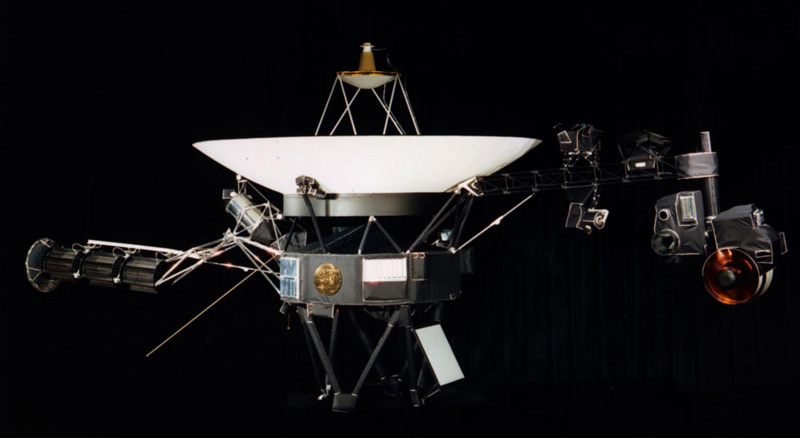Celebrating programmers to the stars and beyond
When NASA’s Voyager 1 and Voyager 2 were launched from Cape Canaveral, Florida in 1977, they each had a mission to conduct close-up studies of Jupiter and Saturn. Now, 41 years later, the twin spacecraft that were designed and built to last five years, have visited those two planets, along with Uranus and Neptune, and are heading further into interstellar space — the farthest point of the Sun’s domain.
According to NASA’s Jet Propulsion Laboratory at the California Institute of Technology, which operates the spacecraft remotely, the information sent back to Earth by the two Voyagers has revolutionized the science of planetary astronomy. The pair of Voyagers are the only spacecraft to have flown this incredible distance, and when they were launched, no one expected that they would still be working this many years later.
Velsoft software engineer Jimmy Mabey says this is an example of one of the world’s greatest accomplishments by programmers. The Voyager spacecraft are billions of miles away from home, and are running on 40-year-old software that’s still communicating with Earth.
Programmers develop and implement various sets of instructions to enable a computer to do a specific task. Without programmers, Mabey says computers wouldn’t do anything, and that means many things wouldn’t exist.
These days, we’re so immersed in using technology that it’s difficult to imagine a world without smart phones, tablets, GPS, and fitness trackers. We know these devices use computers to operate, but many other everyday items rely on computer code to run, including automobiles, air conditioners, and even vacuums.
Because of this, programmers have a huge impact on our daily lives, building the software used on personal computers, phones, and tablets, and the software that businesses use to operate. Basically, anything that runs on a computer needs to be programmed from the operating system to applications and websites.
If programming didn’t exist, we wouldn’t be able to use the internet, play video games, or send and receive email.
For Velsoft, our business wouldn’t be what it is without programmers, because much of the business is based on software built in-house. While we could still develop and sell courseware, we wouldn’t have a Learning Management System, Gameo interactions, our in-house customer relationship management system, or even a website. And this means we wouldn’t be selling our products around the world.
So today, on International Programmers’ Day, we would like to thank the Velsoft IT team for enabling us to do what we do every day, and all the other programmers that make our lives better.
For our programmers, here’s some programming humor (and explanations from iD Tech for the rest of us).
- There are two ways to write error-free programs; only the third one works.
This joke refers to the fact that it is actually impossible to write an error-free program.
It is possible to write a program that seems to have no errors, usually referred to as “bugs” in programmer lingo, but Lubarsky’s Law of Cybernetic Entomology states “There is always one more bug.” The bug may be so tiny and under such specific conditions that you’ll never see it… but there is always one more bug.
Since there is always one more bug, the joke says only the third, non-existent method is the only way to write an error-free program.
- There are 10 types of people in this world. Those who understand binary and those who don’t.
This is a binary joke; binary being a base-2 system. Since it is a base-2 system, it has only 2 digits, 0 and 1.
If we convert binary 10 to decimal, we get: 1 * 21 + 0 * 20 = 1 * 2 + 0 = 2.
So, the joke means “There are two types of people. Those who understand binary and those who don’t.”
If you don’t understand binary though, you’d think there are ten types of people, which would be weird.
In addition to decimal (base-10), octal (base-8) and binary (base-2), hexadecimal (base-16) is also used commonly in programming. It uses the letters A, B, C, D, E, and F as the “digits” above 9.



